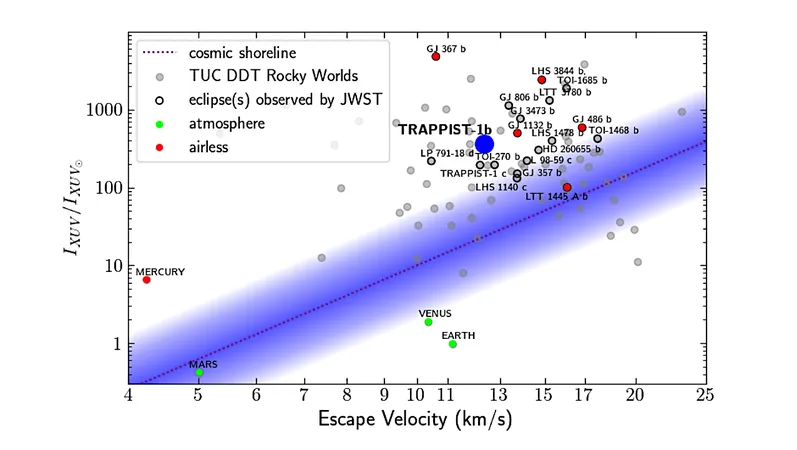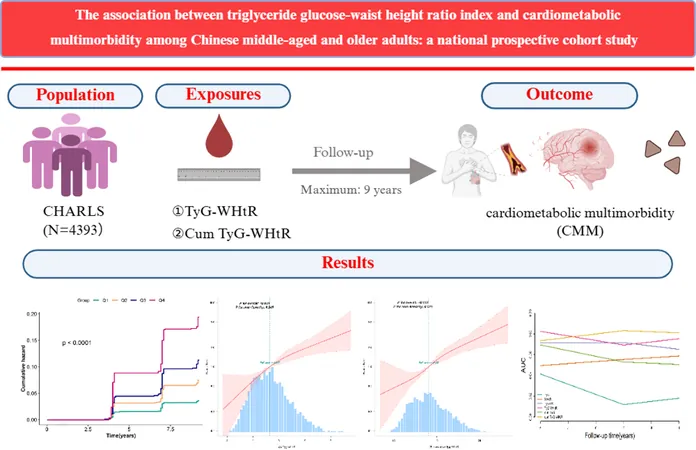
TRAPPIST-1 b: Is This Exoplanet Truly Airless?
2025-09-03
Author: Arjun
Groundbreaking Observations from JWST
Recent observations from the James Webb Space Telescope (JWST) have illuminated the exoplanet TRAPPIST-1 b, revealing a strikingly bright dayside at 12.8 and 15 microns. These findings strongly suggest that the planet may lack a substantial atmosphere. Initial atmospheric models also dismissed the possibility of a CO2-rich environment.
Delving Deeper Into Atmospheric Possibilities
While previous studies have ruled out certain atmospheric types, there remains a vast array yet to be explored. A comprehensive thermal phase curve obtained from TRAPPIST-1 b at 15 microns has now provided scientists with valuable insights into the planet's thermal structure.
Researchers embarked on a quest to identify which atmospheric compositions could explain the bright emissions observed during secondary eclipses. They utilized both a 1D radiative-convective model and a sophisticated 3D global climate model (GCM) to simulate numerous atmospheric scenarios and surface pressures.
Fascinating Findings and Atmospheric Scenarios
The study revealed several atmospheric families that align with the eclipse observations, albeit with some limitations. Certain scenarios produced flat phase curves and were quickly ruled out, while others—like thin N2-CO2 atmospheres and hazy CO2-rich environments—retained compatibility with the data.
Interestingly, the research underscored complex 3D atmospheric effects not predicted by simpler 1D analyses, such as atmospheric collapse and redistribution efficiencies.
What Does This Mean for TRAPPIST-1 b?
The current observations indicate that TRAPPIST-1 b is likely an airless rocky world, but a thin, residual atmosphere rich in CO2 remains a possibility. However, the findings also caution against hastily concluding the presence or absence of an atmosphere based solely on single-photometric measurements.
The Bigger Picture in Exoplanet Studies
The exploration of TRAPPIST-1 b opens the door to further investigations into the atmospheric characteristics of exoplanets. As more data comes from JWST and other missions, our understanding of these distant worlds continues to evolve, underscoring the complexity of their atmospheres and the necessity for comprehensive analysis.


 Brasil (PT)
Brasil (PT)
 Canada (EN)
Canada (EN)
 Chile (ES)
Chile (ES)
 Česko (CS)
Česko (CS)
 대한민국 (KO)
대한민국 (KO)
 España (ES)
España (ES)
 France (FR)
France (FR)
 Hong Kong (EN)
Hong Kong (EN)
 Italia (IT)
Italia (IT)
 日本 (JA)
日本 (JA)
 Magyarország (HU)
Magyarország (HU)
 Norge (NO)
Norge (NO)
 Polska (PL)
Polska (PL)
 Schweiz (DE)
Schweiz (DE)
 Singapore (EN)
Singapore (EN)
 Sverige (SV)
Sverige (SV)
 Suomi (FI)
Suomi (FI)
 Türkiye (TR)
Türkiye (TR)
 الإمارات العربية المتحدة (AR)
الإمارات العربية المتحدة (AR)